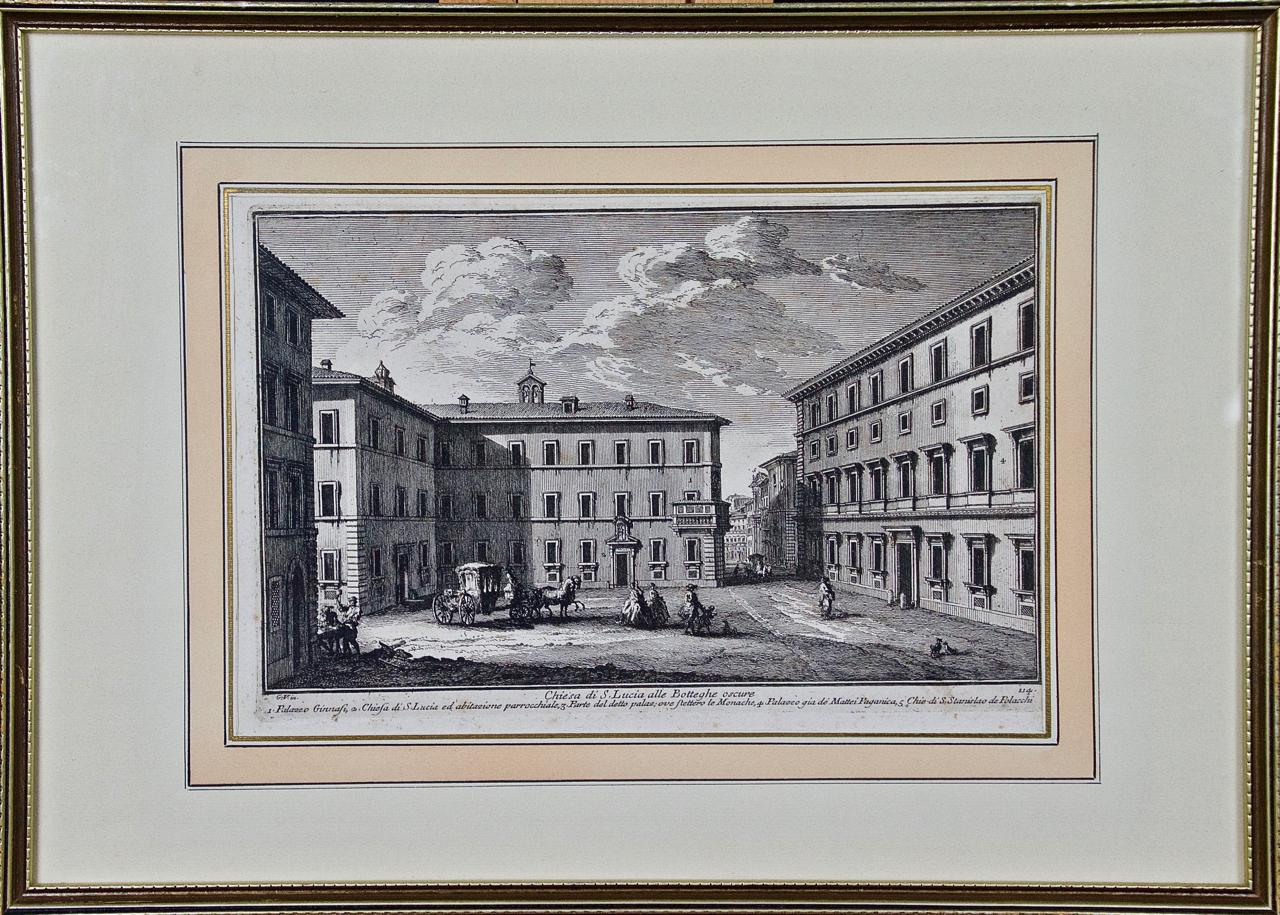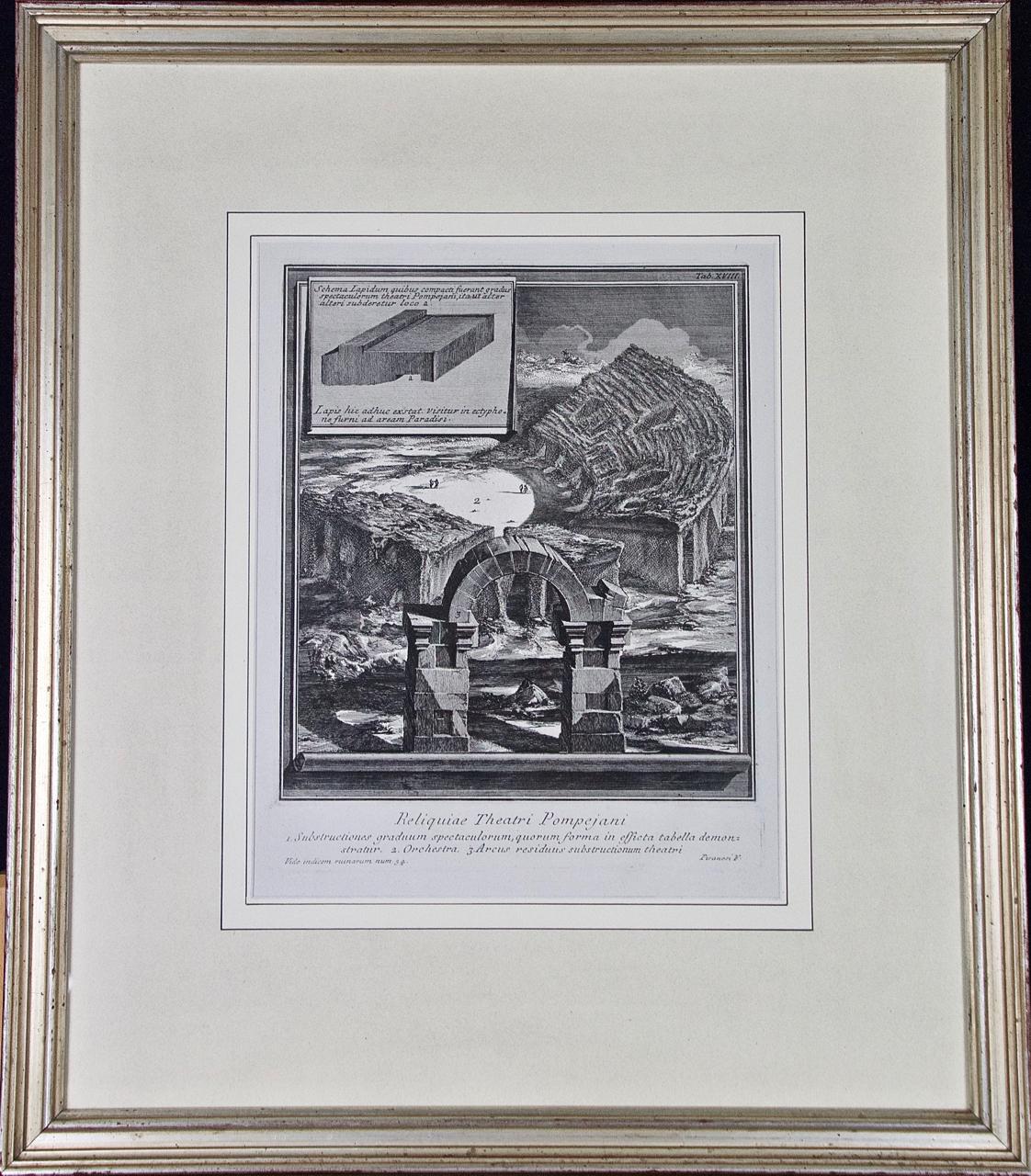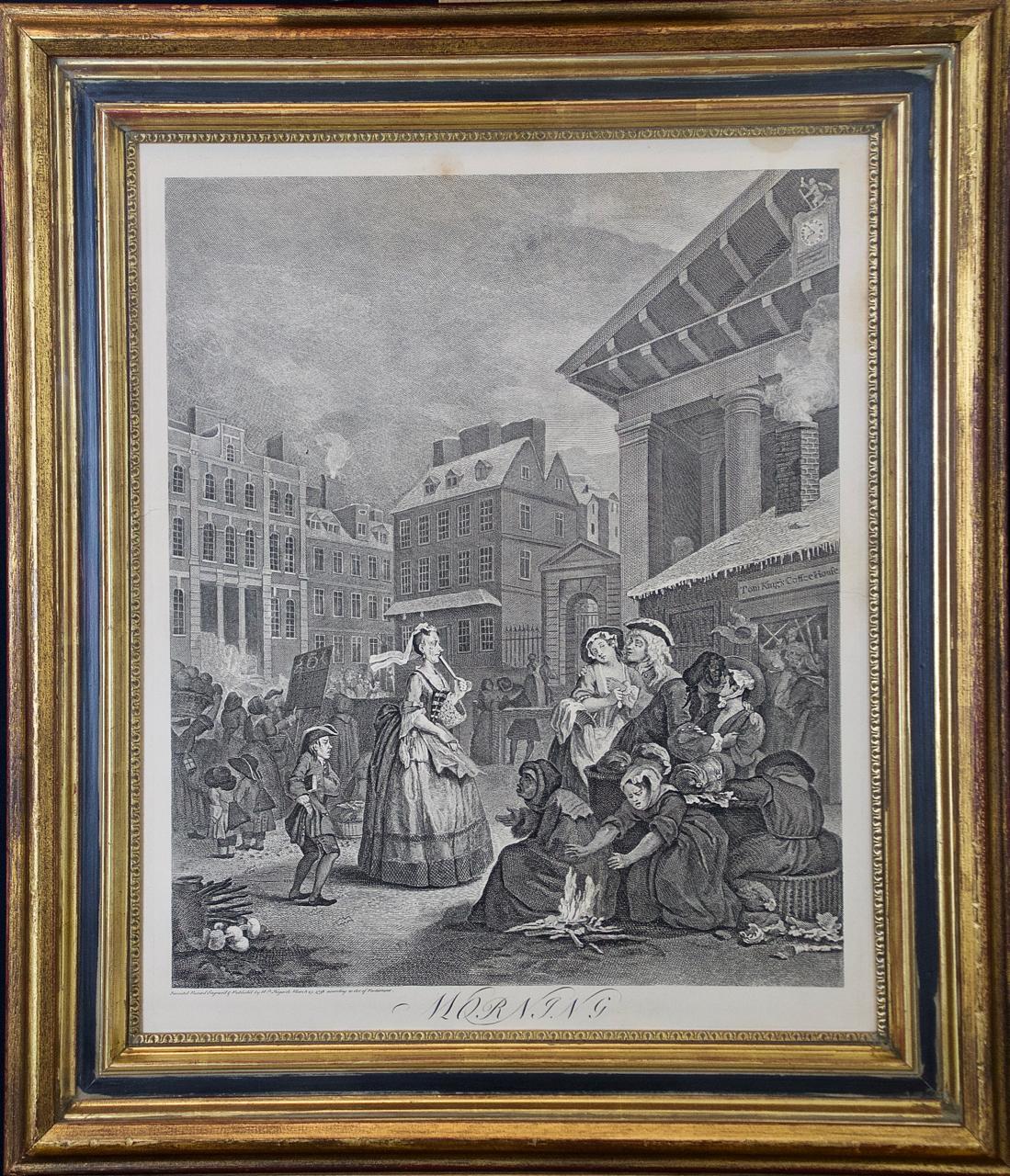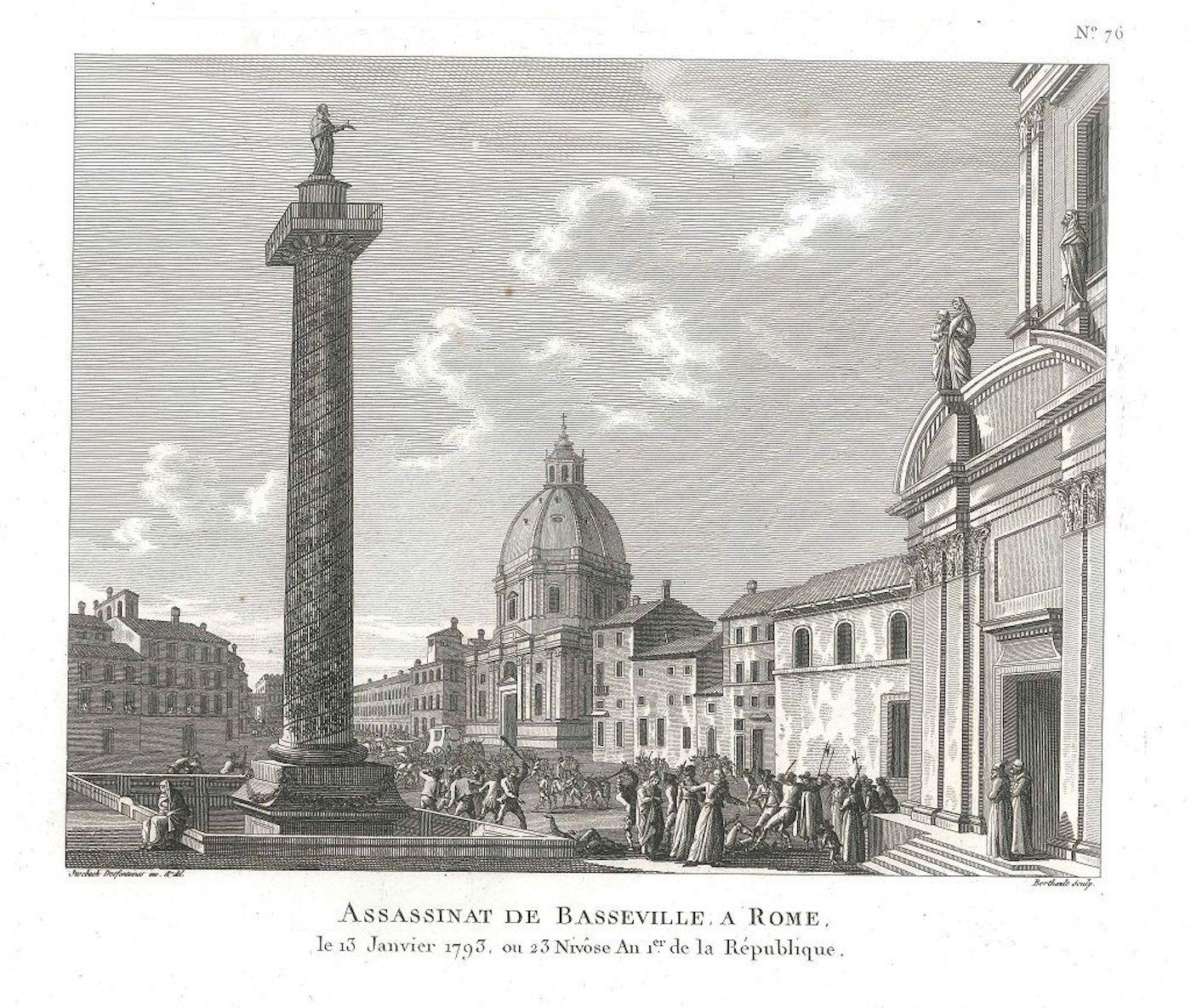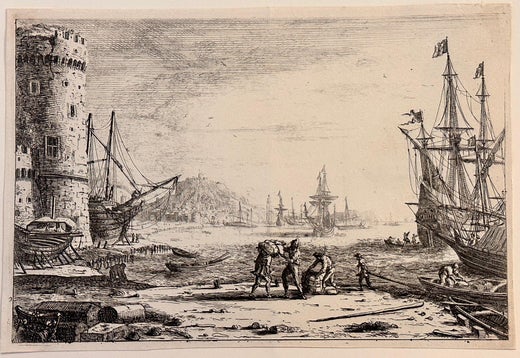Claude Lorrain"Le Bouvier (The Cowherd), " Landscape Etching by Claude Gelle Le Lorrain 1636
1636
About the Item
- Creator:Claude Lorrain (1604 - 1682, French)
- Creation Year:1636
- Dimensions:Height: 19.375 in (49.22 cm)Width: 21.875 in (55.57 cm)
- Medium:
- Movement & Style:
- Period:1630-1639
- Condition:
- Gallery Location:Milwaukee, WI
- Reference Number:
Claude Lorrain
Claude Lorrain, born Claude Gellée, was a French painter, draughtsman and engraver of the Baroque era. He spent most of his life in Italy and is admired for his achievements in landscape painting. He painted a pastoral world of fields and valleys not distant from castles and towns that entered into these quiet scenes. Landscape as a subject was distinctly nontraditional and secular during this time of religious and mythical iconography, and Gellée was certainly breaking with tradition. John Constable described the artist as the most perfect landscape painter the world ever saw and declared that in Claude’s landscape, “all is lovely, all amiable, all is amenity and repose; the calm sunshine of the heart." He passed away on November 23, 1682.
- ShippingRetrieving quote...Ships From: Milwaukee, WI
- Return PolicyA return for this item may be initiated within 14 days of delivery.
- "La Tempete (The Tempest)" an EtchingBy Claude LorrainLocated in Milwaukee, WI"La Tempete" is an original etching by Claude Lorrain (Claude Gellee). This is Claude's earliest dated etching (1630). The work depicts a storm-tossed sea with ships on the verge of ...Category
Early 17th Century Old Masters Landscape Prints
MaterialsEtching
- "L'Apparition (The Vision), " an etching by Claude LorrainBy Claude LorrainLocated in Milwaukee, WI"L'Apparition (The Vision)" is an original etching by Claude Lorrain (Claude Gellee). This print depicts a religious vision near the edge of a river. The publisher is Mannocci #5 and...Category
1630s Old Masters Landscape Prints
MaterialsEtching
- "Conversation Outside Castle, " an Etching by Jan Frans van BloemenBy Jan Frans van Bloemen (Orizzonte)Located in Milwaukee, WI"Conversation Outside Castle" is an original etching by Jan Frans van Bloemen. It depicts a number of figures just outside the majestic walls of a castle. These groups of figures are engaged in their own conversations. 9" x 6 3/4" art 21 5/8" x 19 3/8" frame Jan Frans van Bloemen (baptized 12 May 1662 - buried 13 June 1749) was a Flemish landscape painter mainly active in Rome. Here he was able to establish himself as the leading painter of views (vedute) of the Roman countryside depicted in the aesthetic of the classical landscape tradition. Van Bloemen predominantly painted classical landscapes, taking his inspiration from the Roman Campagna. His landscapes, with their recession through a series of planes, soft, warm lightning and classical and religious subject matter, drew on the examples of artists such as Claude Lorrain and Gaspard Dughet. His paintings are exquisitely imbued with that "difficult-to-define pastoral ambience" which helped to make him such a great painter in the eyes of his contemporaries. The technique and subjects of the work of Jan Frans van Bloemen are also related to painters such as Jan Asselijn...Category
18th Century Old Masters Landscape Prints
MaterialsEtching
- "Mother & Child Near Statues, " Etching by Jan Frans van Bloemen (Orizzonte)By Jan Frans van Bloemen (Orizzonte)Located in Milwaukee, WI"Mother & Child Near Statues" is an original etching by Jan Frans van Bloemen. It depicts two figures, a mother and child pair, next two two classical statues. There are other figures in this park-like environment. 9 1/4" x 6 3/4" art 21 5/8" x 19 3/8" frame Jan Frans van Bloemen (baptized 12 May 1662 - buried 13 June 1749) was a Flemish landscape painter mainly active in Rome. Here he was able to establish himself as the leading painter of views (vedute) of the Roman countryside depicted in the aesthetic of the classical landscape tradition. Van Bloemen predominantly painted classical landscapes, taking his inspiration from the Roman Campagna. His landscapes, with their recession through a series of planes, soft, warm lightning and classical and religious subject matter, drew on the examples of artists such as Claude Lorrain and Gaspard Dughet. His paintings are exquisitely imbued with that "difficult-to-define pastoral ambience" which helped to make him such a great painter in the eyes of his contemporaries. The technique and subjects of the work of Jan Frans van Bloemen are also related to painters such as Jan Asselijn...Category
18th Century Old Masters Landscape Prints
MaterialsEtching
- "Figures Outside the Monastery, " Original Etching by Jan Frans van BloemenBy Jan Frans van Bloemen (Orizzonte)Located in Milwaukee, WI"Figures Outside the Monastery" is an original etching by Jan Frans van Bloemen. It depicts people on the path to a church. 7" x 10 1/4" art 19 1/4" x 22 5/8" frame Jan Frans van Bloemen (baptized 12 May 1662 - buried 13 June 1749) was a Flemish landscape painter mainly active in Rome. Here he was able to establish himself as the leading painter of views (vedute) of the Roman countryside depicted in the aesthetic of the classical landscape tradition. Van Bloemen predominantly painted classical landscapes, taking his inspiration from the Roman Campagna. His landscapes, with their recession through a series of planes, soft, warm lightning and classical and religious subject matter, drew on the examples of artists such as Claude Lorrain and Gaspard Dughet. His paintings are exquisitely imbued with that "difficult-to-define pastoral ambience" which helped to make him such a great painter in the eyes of his contemporaries. The technique and subjects of the work of Jan Frans van Bloemen are also related to painters such as Jan Asselijn, Thomas Wyck...Category
18th Century Old Masters Landscape Prints
MaterialsEtching
- "Figures at the Obelisk, " Original Etching Landscape by Jan Frans van BloemenBy Jan Frans van Bloemen (Orizzonte)Located in Milwaukee, WI"Figures at the Obelisk" is an original etching by Jan Frans van Bloemen. It depicts two people conversing in front of a monument. Behind them, an expansive landscape sprawls. 9 1/4" x 6 3/4" art 21 3/4" x 19 3/8" frame Jan Frans van Bloemen (baptized 12 May 1662 - buried 13 June 1749) was a Flemish landscape painter mainly active in Rome. Here he was able to establish himself as the leading painter of views (vedute) of the Roman countryside depicted in the aesthetic of the classical landscape tradition. Van Bloemen predominantly painted classical landscapes, taking his inspiration from the Roman Campagna. His landscapes, with their recession through a series of planes, soft, warm lightning and classical and religious subject matter, drew on the examples of artists such as Claude Lorrain and Gaspard Dughet. His paintings are exquisitely imbued with that "difficult-to-define pastoral ambience" which helped to make him such a great painter in the eyes of his contemporaries. The technique and subjects of the work of Jan Frans van Bloemen are also related to painters such as Jan Asselijn, Thomas Wyck...Category
18th Century Old Masters Landscape Prints
MaterialsEtching
- 18th Century Etching of "Chiesa di S. Lucia" in Rome by Giuseppe VasiBy Giuseppe VasiLocated in Alamo, CAThis 18th century etching is entitled "Chiesa di S. Lucia alle Botteghe Oscure" by Giuseppe Vasi was published in Rome in 1747 in Vasi's 'Magnificenze di Roma Antica e Moderna', whic...Category
Mid-18th Century Old Masters Landscape Prints
MaterialsEtching
- Piranesi 18th C. Etching "Reliquiae Theartri Pompejani" an Ancient Roman TheaterBy Giovanni Battista PiranesiLocated in Alamo, CAThis a framed Giovanni Battista Piranesi (1720-1778) etching entitled "Reliquiae Theartri Pompejani" (Remains of the Theatre of Pompey) from "Il Campo Marzio dell'Antica Roma" (The C...Category
Mid-18th Century Old Masters Landscape Prints
MaterialsEtching
- Four Framed Hogarth Engravings "Four Times of the Day"By William HogarthLocated in Alamo, CAThe four plates in this "Four Times of the Day" set were created utilizing both engraving and etching techniques by William Hogarth in 1738. Hogarth's original copper plates were refurbished where needed by James Heath and these engravings were republished in London in 1822 by Braddock, Cradock & Joy. This was the last time Hogarth's original copper plates were used for printing. Most were melted down during World War I for the construction of bombs. Printed upon early nineteenth century wove paper and with large, full margins as published by William Heath in 1822. The inscription below each print reads "Invented Painted & Engraved by Wm. Hogarth & Publish'd March 25. 1738 according to Act of Parliament". These large folio sized "Four Times of the Day" engravings/etchings are presented in complex gold-colored wood frames with black bands and scalloped gold inner trim. A majority of each thick impressive frame is covered with glass applied near the outer edge. Each frame measures 25.75" high, 22.25" wide and 1.88" deep. There are a few small dents in the edge of these frames, which are otherwise in very good condition. "Morning" has two focal areas of discoloration in the upper margin and some discoloration in the right margin, a short tear in the left margin and a short tear or crease in the right margin. "Noon" has a spot in the upper margin that extends into the upper image, but it is otherwise in very good condition. "Evening" has a faint spot in the upper margin, but it is otherwise in very good condition. "Night" is in excellent condition. The "Four Times of the Day" series is in the collection of many major museums, including: The British Museum, The Metropolitan Museum of Art, The Tate Museum, The Chicago Art Institute and The Victoria and Albert Museum. Through this series Hogarth is portraying early 18th century London street life at "Four Times of the Day". His characters are exhibiting their personalities, quircks, strange activities, but he also wants to draw attention the disparities between the wealthy aristocracy and the common working class. Plate 1, "Morning" depicts morning in Covent Garden in the winter in front of Tom King...Category
Mid-18th Century Old Masters Landscape Prints
MaterialsEngraving, Etching
- Assassinat de Basseville à Rome - Original Etching by P.G. Berthault - 1793By Pierre Gabriel BerthaultLocated in Roma, ITAssassinat De Basseville à Rome is an original black and white etching realized by Pierre Gabriel Berthault, after Jacques François Joseph Swebach-Desfontaines in 1793. Title with caption on plate on the lower center: "Assassinat de Basseville, à Rome/ le 13 Janvier 1793, ou 23 Nivose An Ier de la République". Below the image on the lower margin, "Swebach Desfontaines onv. et del. / Berthault sculp." is etched on plate. This modern artwork is numbered "N. 76", because it is from the series Les Tableaux historiques de la Révolution française. As a matter of fact, Pierre-Gabriel Berthault is well-known for having engraved plates from this collection with the collaboration of the engraver Jean Duplessis-Bertaux. A work - hanging in the balance between news and history - with illustrations of salient or minimal events occurred during the French Revolution. As a celebration of the new ideals of brotherhood, justice, and equality, Les Tableaux immediately became a point of reference for journalism at the time. Of traditional cut, namely showing a view with many human figures, the engraving simplified the lines to be immediately readable for the general public. In our specific case, this original print represents the murder of Hugou de Bassville or Basseville (7 February, 1743 – 13 January, 1793), a French journalist and diplomatist, and protector of the radical Jacobins in Rome. In excellent conditions, except for a usual yellowing of the paper on the edges and a light trace of oxidations on the lower and right margins, beyond the marginal line of the matrix. Pierre-Gabriel Berthault (Saint-Maur-des-Fossés, 1737 - Paris, 1831) was a French master who made engravings from drawings by Jean-Claude Richard de Saint-Non (known as the Abbot of Saint-Non) and from paintings by Louis François Cassas. He depicted many views of Italy and created the collections Voyage à Naples and Voyage pittoresque de la Syrie, de la Palestine et de la basse-Egypte. Before the French Revolution, he was famous for being the author of the Vues intérieures de Paris and for tables with architectural elevations.Category
1790s Old Masters Landscape Prints
MaterialsEtching
- The Passengers - Original Etching by A. M. de Ghuy - 1775Located in Roma, ITThe Passenger is an original artwork realized by Antoine de Marcenay de Ghuy in 1775. Original etching on paper. Titled on the lower margin at the center. The artwork is glued on ca...Category
1770s Old Masters Landscape Prints
MaterialsEtching
- Liber Veritatis - Original B/W Etching after Claude Lorrain - 1815By Ludovico CaraccioloLocated in Roma, ITImage dimensions: 21 x 27 cm. Liber Veritatis - Plate 95 is a beautiful black and white etching and aquatint on paper realized by the Italian artist Ludovico Caracciolo, after Claud...Category
1810s Old Masters Figurative Prints
MaterialsAquatint, Etching
